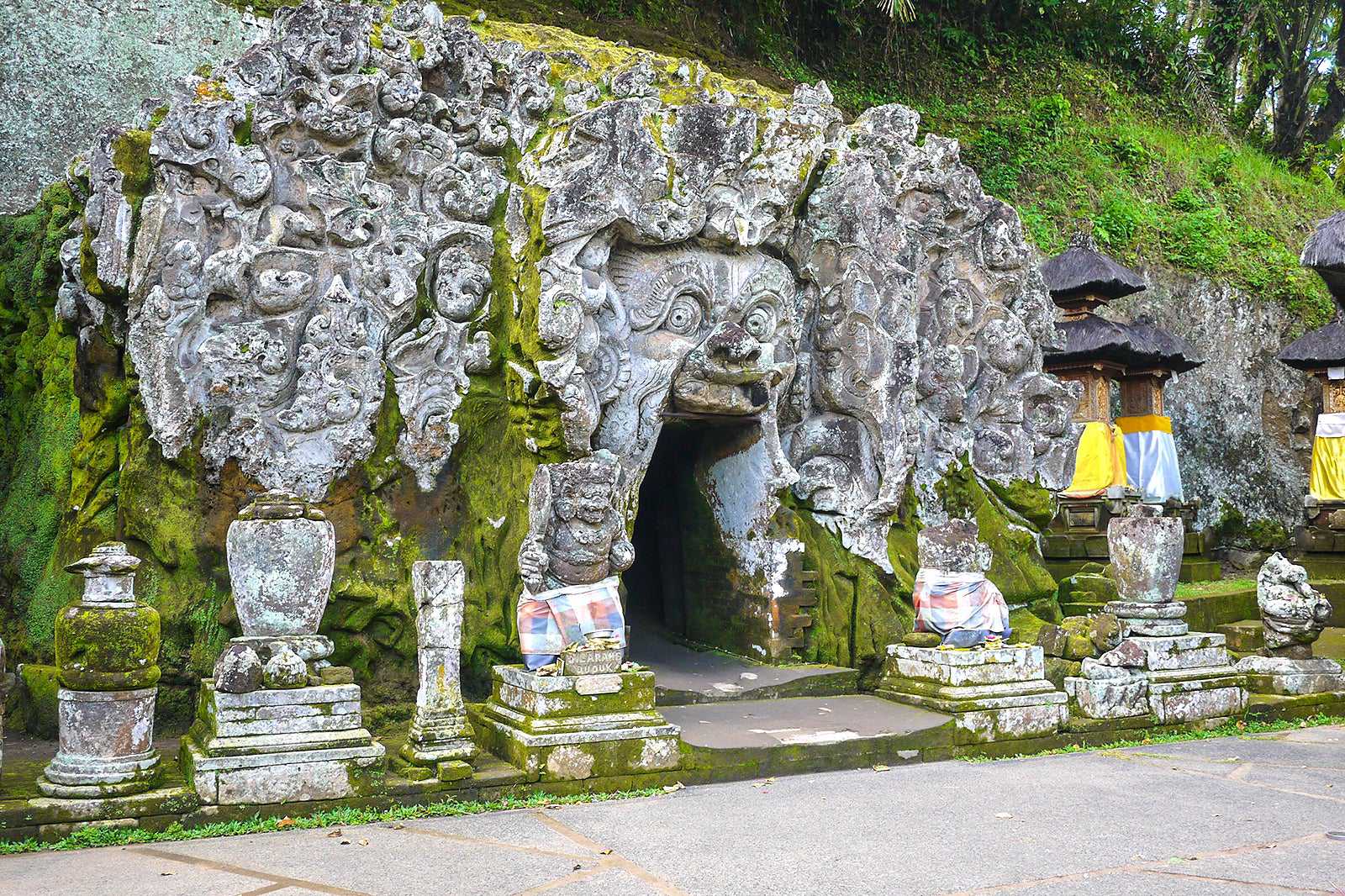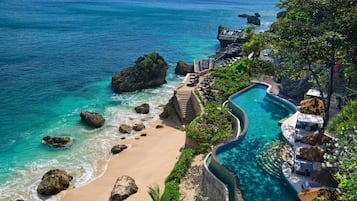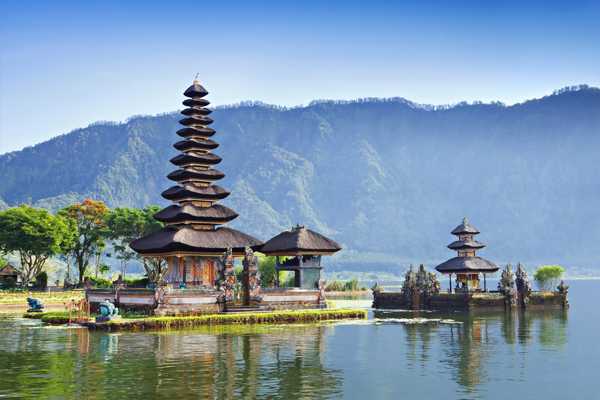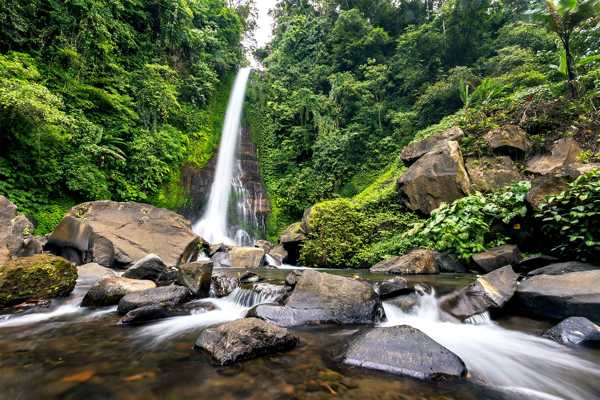The Goa Gajah ‘Elephant Cave’ is an archaeological site on the cool western borders of Bedulu Village, 6 km out of central Ubud. To the unknowing, Goa Gajah’s name can be slightly misleading, often creating an impression that the site is a gigantic dwelling full of elephants.
After taking the flight of stone steps down to the Goa Gajah temple complex, you often don't need more than an hour to explore and admire the relic-filled courtyard and view the rock-wall carvings. The site contains a namesake meditational cave, bathing pools and fountains.
Goa Gajah Temple in Bali - one of the highlights of 5 Must-See Temples in Ubud and 26 Must-See Temples in Bali (Read all about Bali here)
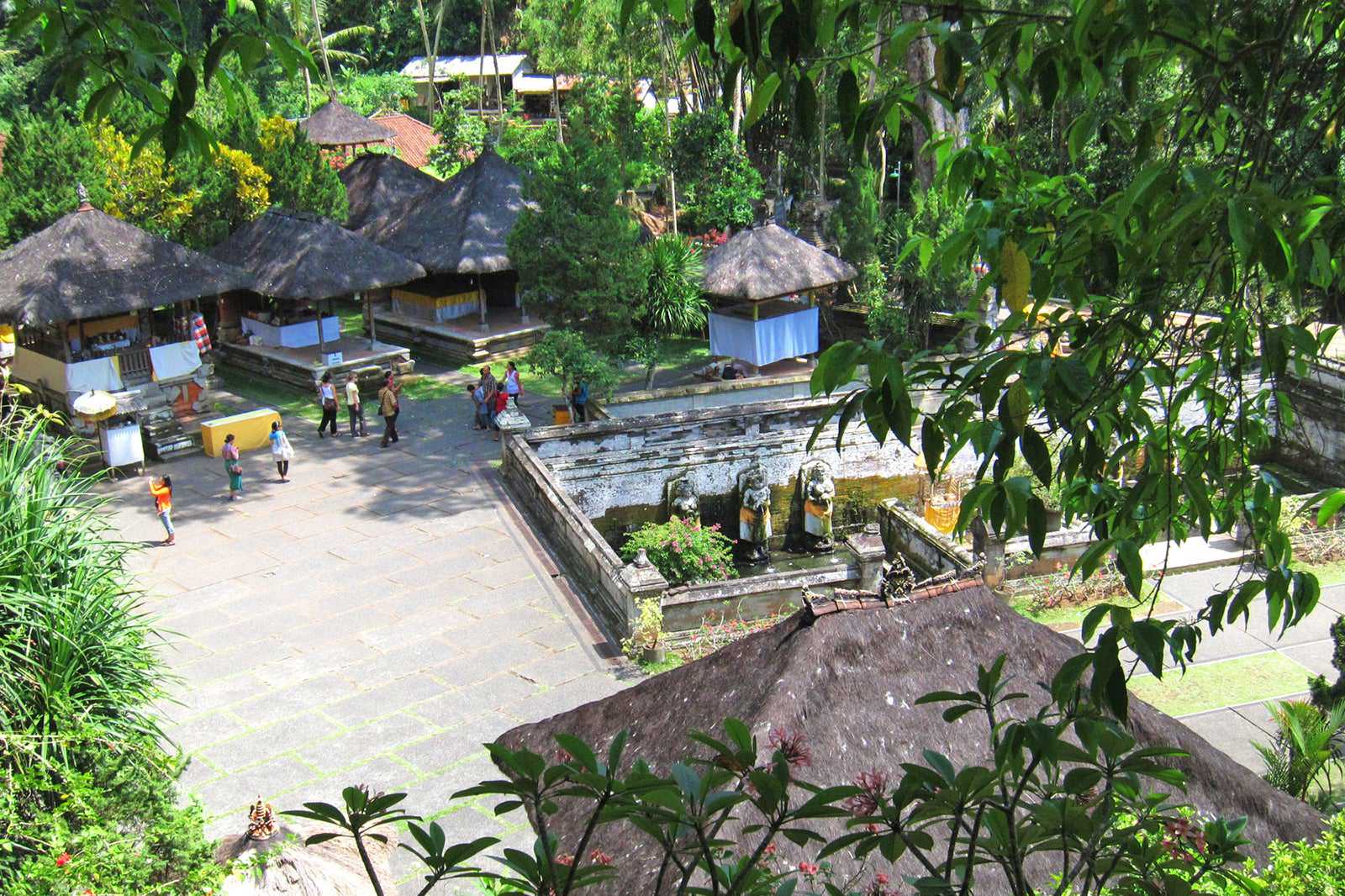
fotoğraf: Aiko Konishi (CC BY 2.0) değiştirildi
What you'll find at Goa Gajah
The roadside and parking area before the site is lined with various art and souvenir shops and refreshment kiosks. Upon reaching the courtyard you'll come across a large wantilan meeting hall and an assortment of large old stone carvings, some restored to their former glory. The pool, excavated in 1954, features 5 out of supposedly 7 statues depicting Hindu angels holding vases that act as waterspouts.
Various structures reveal Hindu influences dating back to the 10th century, and some relics feature elements of Buddhism dating even earlier to the 8th century. The cave is shallow; inside are 3 stone idols each wrapped in red, yellow and black cloths. Black soot lines the cave’s walls as a result of the present-day incense burning. Several indentations show where meditating priests once sat. The northern side of the complex is dominantly Buddhist while it’s mostly Shivaite south across the river.
At the southern end of the complex are beautiful rice fields and small streams that lead to the Petanu River – another site entwined in local legends. Goa Gajah was built on a hillside and as 2 small streams met here forming a campuhan (river junction), which led to the site being considered sacred and the reason it was built for hermetic meditation and prayers.
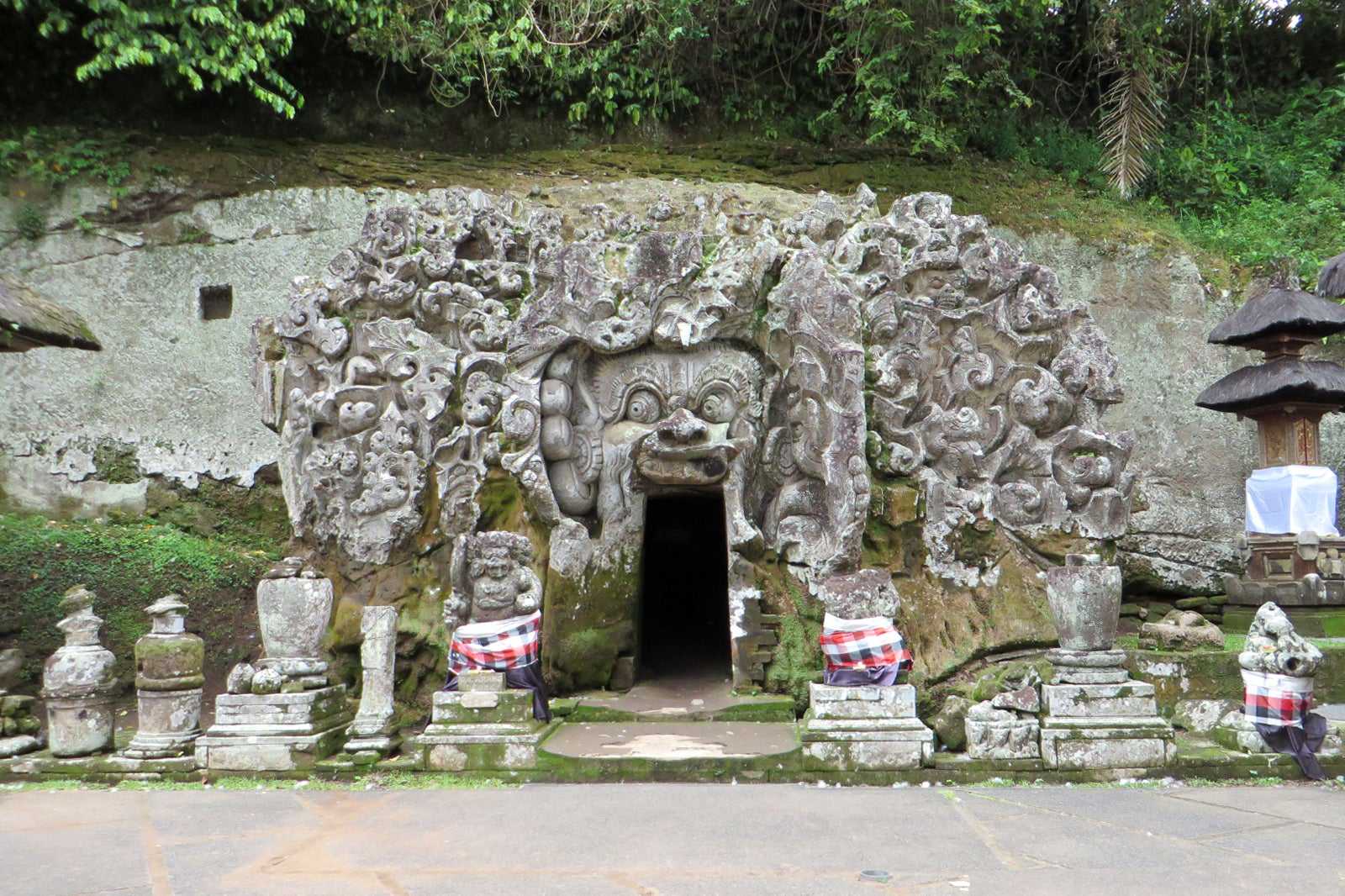
fotoğraf: Cakhairia (CC BY-SA 3.0) değiştirildi
What’s in the name?
Even though Goa Gajah translates to ‘Elephant Cave’, you won’t find any pachyderms here. Various theories suggest the origin of the name. One is based on the Petanu River being originally called ‘Lwa Gajah’ before it came to be called Petanu River. Other sources state that the ‘Gajah’ or elephant aspect came in from the stone figure inside the cave which depicted the Hindu god Ganesh, who is characterised bearing an elephant’s head.
Ancient inscriptions also allude to the name Antakunjarapada, which roughly translates to ‘elephant’s border’. The cave’s entrance shows a menacing giant face with its wide open mouth as the door. Various motifs depicting the forest and animals are carved out of the outer rock face. The giant face was considered to be that of an elephant’s.
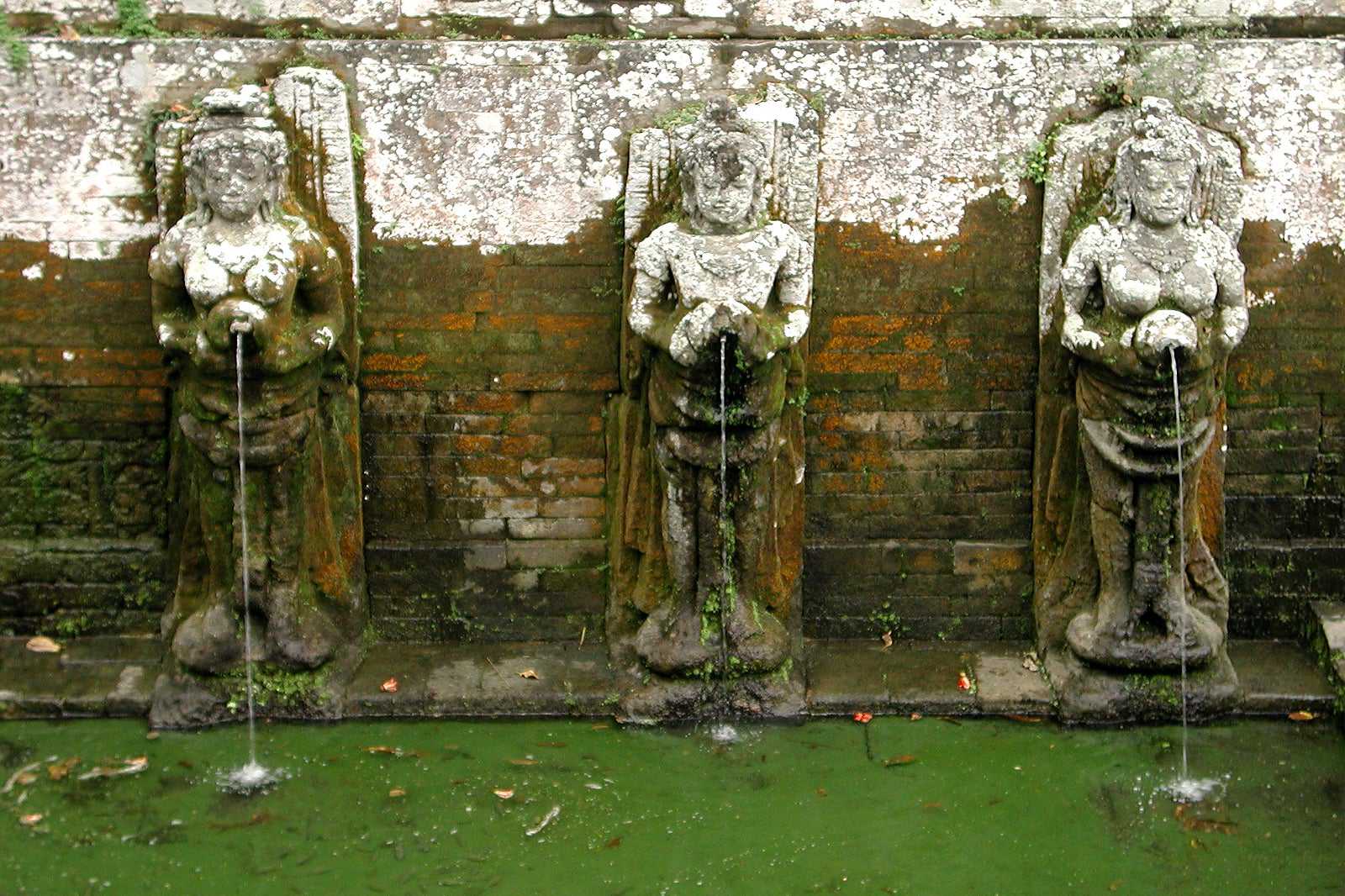
Visiting Goa Gajah
As with any temple visit in Bali, women during their periods are forbidden entrance and wearing a sarong and waist sash is mandatory. These are available for rent at the entrance.
Goa Gajah temple celebrates its piodalan temple anniversary every 'Anggara Kasih Prangbakat' Tuesday on the Balinese 210-day Pawukon calendar. This day corresponds to different dates on the Gregorian calendar each year.
Goa Gajah Temple in Bali
Konum: Jalan Raya Goa Gajah, Pejeng Kawan, Tampaksiring, Gianyar, Bali 80582, Indonesia
Açık olduğu saatler: Daily from 8am to 4pm
